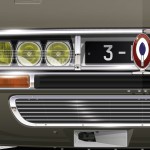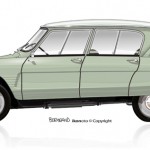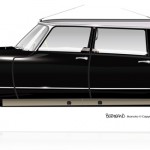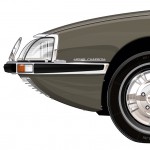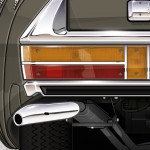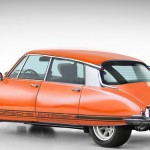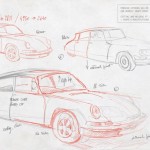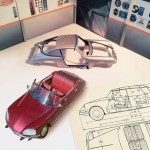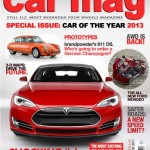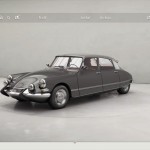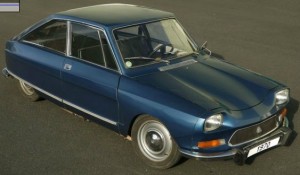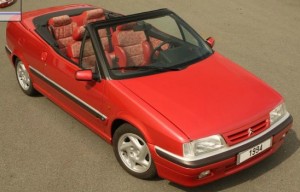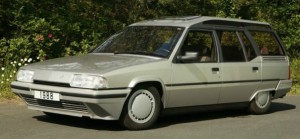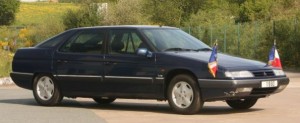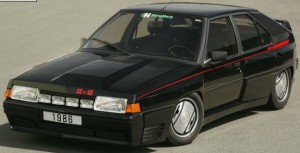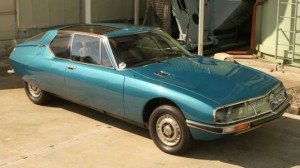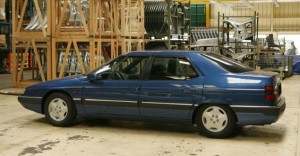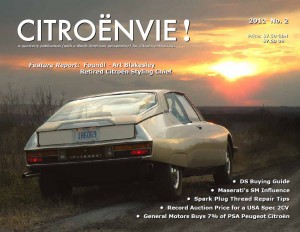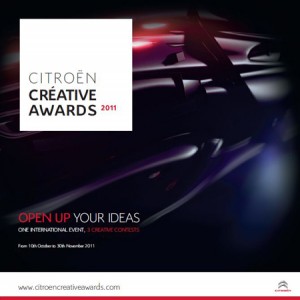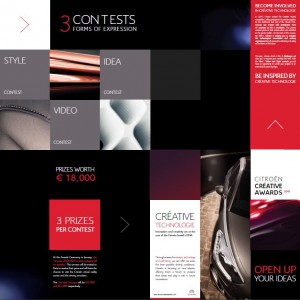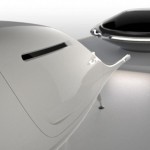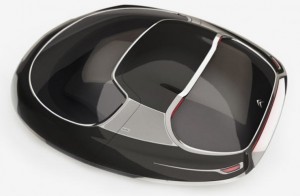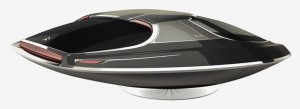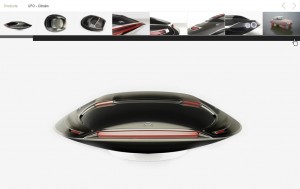Der Tip für Besitzer eines Apple iPad, die eine hochkarätige und sehr gut gemachte App über historische Automobile suchen:
“Road Inc. – Legendary cars” der Softwareschmiede Pyrolia ist eine der besten Applikationen für diejenigen, die sich über ausgesuchte Pretiosen des Automobilbaus markenübergreifend und vor allem qualifiziert informieren wollen.
In der Applikation, die vor wenigen Tagen sogar kostenfrei angeboten wurde und derzeit nur 3,99 Euro kostet, finden sich u.a. ein 1966 Citroën DS 21 Pallas und ein 1959 Citroën 2CV.

Sorgsam gerenderte 3D-Modelle, die aus verschiedenen Ansichten betrachtet werden können und deren Detaillierungsgrad nicht zu wünschen übrig läßt, (wer weiss, welche “halbgaren” 3D-Modelle teils in Online-Shops verkauft werden, wird überrascht sein, wie gut diese hier sind) präsentieren sehr ästhetisch das jeweilige Fahrzeug und vermitteln einen sehr guten Gesamteindruck des Fahrzeug-Designs. Selbst eine Gradulux-Heckjalousie findet sich im 3D-Modell des Citroën DS.
Selbst das (derzeit kostenfreie) Herunterladen und erste Betrachten des jeweiligen Fahrzeugs wird sehr gut zelebriert – die bis dato nur als Silhouette erkennbaren Fahrzeuge sind mit einem Tuch verhüllt, welches bei Antippen dann wie von Geisterhand nach oben hin weggezogen wird.
Neben der visuellen Präsentation des Automobils vermittelt die App umfangreiche Informationen zum Fahrzeug selbst – siehe Beispielbilder hier im Artikel. Die Texte sind nicht nur rudimentär übersetzt sondern sorgfältig bearbeitet – die getesteten deutschen und englischen Beschreibungen sind stimmig und gut.
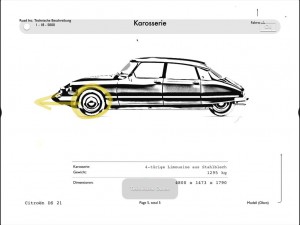
Darüber hinaus verfügen alle Modelle über eine Art technisches Datenblatt, welches die Dimensionen, Antrieb und weitere Fahrzeugparameter zusammenfassend darstellt. Die New York Times, TopGear und andere preisen die Software als eine bemerkenswerte und herausragende Anthologie – für uns gilt sie als Referenz im Infotainment Bereich für klassische Automobile.
Darüber hinaus sind weitere Inhalte multimedial abrufbar:
* Mehr als 3000 Artikel für alle Fahrzeuge, darunter Broschüren, Jahrbücher, Zeichnungen, zeitgenössische Werbung, Pläne, Zeitschriften- und Journal-Artikel etc.
* Mehr als 70 Videos mit Auszügen aus Veranstaltungen, Interviews, Fernsehwerbungen etc.
* Über 350 hochwertige Studiofotografien der Fahrzeuge – ästhethisch top in Szene gesetzt
* Die Motorengeräusche der Fahrzeuge können abgerufen werden
* Über 350 Seiten Features und Essays zu den Fahrzeugen
Die Applikation “Road Inc.” ist wie ein Rundgang durch ein Museum aufgebaut und setzt die Auswahl der 50 Denkmäler der Automobilgeschichte in völlig neuer digitaler Art und Weise in Szene. Vom Flugzeug zum Automobil, von Art déco zur Streamline-Moderne, von der Rakete zum Cadillac, von der Skizze zum Prototypen, vom Traum zum Sieg, von der Rennbahn zur Fließbandproduktion – die einzigartigen Kreationen, gekoppelt mit den Archivdokumenten von Road Inc. nehmen den Benutzer mit auf eine Reise, bei der sich Geschichte, Design, Technologie und Emotionen zu einem virtuellen Museum vereinen. Durch verschiedene Raumerkundungen, veränderbare Objekte, Lichteffekte und akustische Untermalung sowie durch eine reichen Auswahl an Themen wird aus der Einladung zur Besichtigung einer minutiös geplanten Umgebung ein lebendiges, aktives und packendes Erlebnis.
Das interaktive 3D-Museum des internationalen Fahrzeugbaus, das in deutsch, englisch, französisch, italienisch und spanischer Sprache verfügbar ist, ist daher unser Tip des Monats.
Viel Spass!
Weitere Infos hier:
Apple iTunes Store: “Road Inc. – Legendäre Automobile”
sowie in der aktuellen Pressemappe (deutsch) zum Download auf den Amicale Seiten.
—–
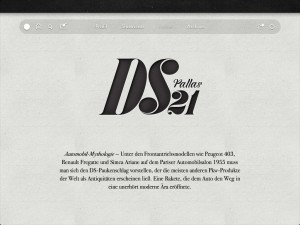
Our app hint for Apple iPad owners: “Road Inc. – Legendary Cars”
For those of you who own an Apple iPad and who are looking for a high-profile and very well done app on historic cars, there’s one to be mentioned:
“Road Inc. – Legendary Cars” from Pyrolia is one of the best applications for those seeking especially qualified information on selected precious classic vehicles across all brands.
The application (which was a few days ago even offered free of charge and currently only costs 3.99 Euro) provides details on a 1959 Citroën 2CV and a 1966 Citroën DS 21 Pallas and ca. 50 other cars.
Carefully rendered 3D models can be viewed from multiple angles with a huge level of authentic detail – those who ever have been looking for high quality 3D models of classic cars know what other “half-baked” quality is mostly sold in online stores, and will be surprised how well these ones are rendered. “Road Inc.” presents each model very aesthetically and provides a very good overall impression of the vehicle design. Even a Gradulux-aft jalousie can be found within the 3D model of the Citroën DS.
Even the (currently free) download and first visualization of the particular vehicle is celebrated – at first, the cars are only visible in some silhouette and are covered with a cloth that is pulled away from tapping then as if by magic from the top.
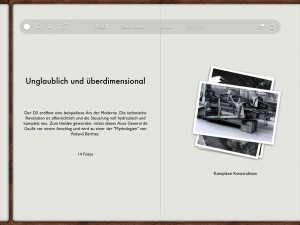
In addition to the stunning visual presentation of the automobile, the app provides comprehensive information on the vehicle – see sample images here in the article. The texts and articles are not only translated rudimentary but rather carefully edited – the tested German and English descriptions are consistent and of high quality.
Furthermore, all models feature a kind of technical data spec sheet showing the dimensions, propulsion, and other vehicle parameters in a summarized format. The New York Times, TopGear and others praise the software as a remarkable and outstanding anthology – for us it is certainly a reference in the area of infotainment for classic cars.
In addition, more multimedia content is available, to quote from the iTunes app description:
★ 50 landmark automobile models to unveil and explore, from the Ford T to the Bugatti Veyron. (With more to come).
★ An interactive 3D museum tour allowing to explore every single angle of 50 road icons.
★ Over 3,000 Archival documents including brochures, yearbooks, blueprints, adverts, plans, press articles and more…
★ Over 70 videos including race archives, interviews, commercials and more…
★ More than 350 high definition studio photographs from the most acclaimed automotive photographers
★ More than 100 roaring engine sounds for the full experience
★ Over 350 pages of original in-depth feature essays
★ AirPlay support for videos, music & engine sounds(streams audio directly to your Hi-Fi speakers or Apple TV)
★ Social content-sharing features (Facebook, Twitter, email)
The 3D interactive museum of the international automotive engineering, which is available in English, German, French, Italian and Spanish languages, certainly is our tip of the month – if not the year…
Enjoy!
More info here:
Apple iTunes Store: “Road Inc. – Legendäre Automobile”
as well as in the latest press map (english, UK) which is available for download on our Amicale website.
—–
L’ Apple iPad application du mois: “Road Inc. – Voitures de Légende”
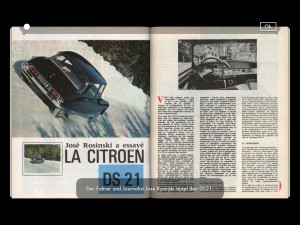
Pour ceux d’entre vous qui possèdent un iPad d’Apple et qui sont à la recherche d’une application de grande envergure et très bien fait sur les voitures historiques, il ya un être mentionnés:
“Road Inc – Voitures de Légende” de Pyrolia est l’une des meilleures applications pour ceux qui cherchent des informations particulièrement qualifiée sur certaines précieux véhicules classiques à travers toutes les marques.
L’application (qui a été il ya quelques jours a même offert gratuitement et actuellement ne coûte que 3,99 euros) fournit des détails sur les Citroën 2CV de 1959 et la Citroën DS 21 Pallas de 1966 et ca. 50 d’autres voitures.
Soigneusement rendus des modèles 3D peuvent être visualisées à partir d’angles multiples avec un énorme niveau de détail authentique – ceux qui ont jamais été à la recherche de modèles 3D de haute qualité de voitures classiques sais quel autre “mi-cuit” la qualité est surtout vendu dans les magasins en ligne, et de la volonté être surpris à quel point ceux-ci sont rendus. “Road Inc” contient pour chaque modèle très esthétique et donne une très bonne impression d’ensemble de la conception du véhicule. Même une jalousie Gradulux a l’arrière peut être trouvé dans le modèle 3D de la DS de Citroën.
Même la visualisation (actuellement gratuit) aprés télécharger et d’abord le véhicule particulier est célébrée – dans un premier temps, les voitures sont visibles que dans certains silhouette et sont recouverts d’un tissu qui est arrachée de taraudage, puis, comme par magie à partir du haut.
En plus de la présentation visuelle étonnante de l’automobile, l’application fournit des informations complètes sur le véhicule – voir des exemples d’images ici dans notre article. Les textes et les articles ne sont pas seulement traduits mais plutôt rudimentaire édité avec soin – les descriptions testés allemande et anglaise sont cohérents et de haute qualité.
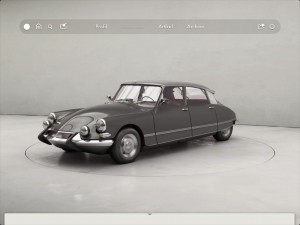
En plus, tous les modèles sont équipés d’une sorte de fiche technique fiche indiquant les dimensions, la propulsion et les paramètres d’autres véhicules dans un format résumé. Le New York Times, TopGear et d’autres louent cette software comme une anthologie remarquable et exceptionnelle – pour nous, c’est certainement une référence dans le domaine de l’infotainment pour les voitures classiques.
En outre, plus de contenu multimédia est disponible, pour citer la description app iTunes:
★ 50 modèles automobiles d’exception à dévoiler et explorer, de la Ford T à la Bugatti Veyron. (Autres modèles à venir).
★ Parcours 3D interactif permettant de voir chacune des voitures sous tous les angles possibles.
★ Plus de 70 vidéos comprenant archives de course, interviews, spots publicitaires, etc.
★ Plus de 350 photographies haute définition des plus grands photographes automobile.
★ 3,000 documents d’archive comprenant brochures, yearbooks, blueprints, publicités, plans, extraits de presse et plus encore…
★ Plus de 100 sons de moteurs
★ Plus de 350 pages de textes de fonds originaux
★ Modules de partage de contenu (Facebook, Twitter, email)
Le musée interactif en 3D de l’ingénierie automobile internationale, qui est disponible en anglais, allemand, français, italien et espagnol, donc est notre conseil du mois.
Amusez-vous!
Plus d’infos ici:
Apple iTunes Store: “Road Inc. – Legendäre Automobile”
et aussi dans le communique de presse (en francais) qui vous pouvez telecharger sur les pages Amicale Citroën.
